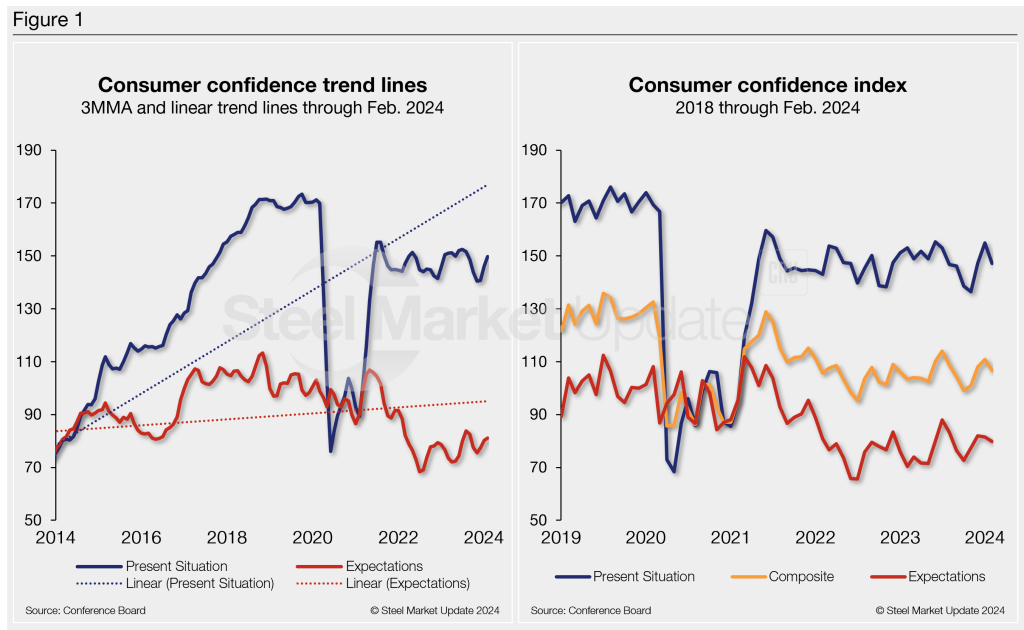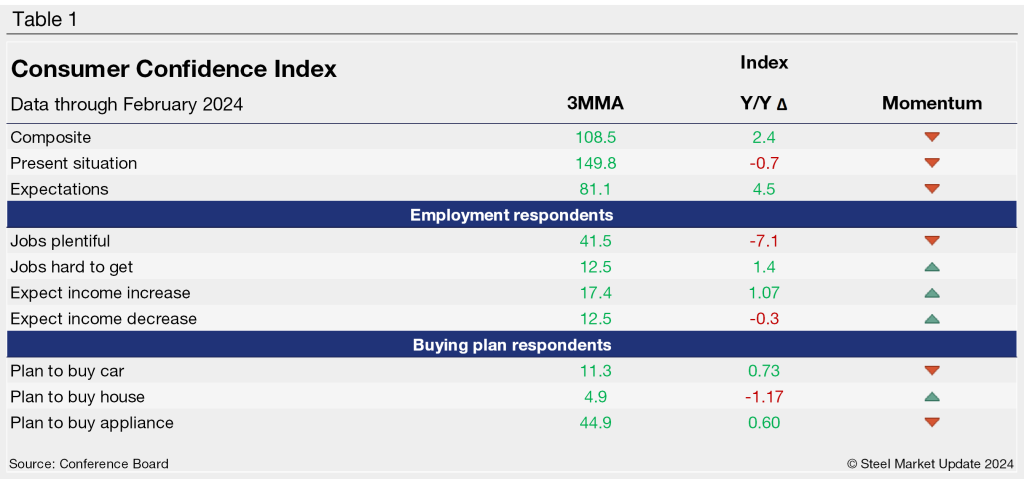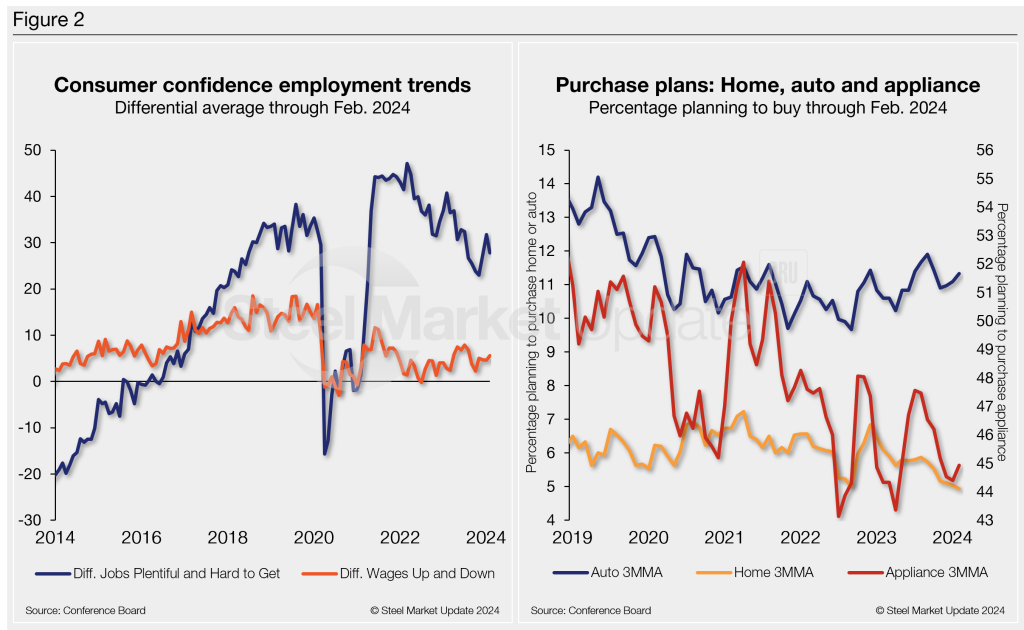The Conference Board Consumer Confidence Index ® (CCI) is a barometer of the health of the US economy from the perspective of the consumer. The index is based on consumers’ perceptions of current business and employment conditions, as well as their expectations for six months hence regarding business conditions, employment, and income. The Consumer Confidence Index and its related series are among the earliest sets of economic indicators available each month and are closely watched as leading indicators for the U.S. economy. The index has two components and five sub components.
Consumer Confidence
- Respondents’ appraisal of current business conditions.
- Respondents’ appraisal of current employment conditions.
The Expectations Index
- Respondents’ expectations regarding business conditions six months hence.
- Respondents’ expectations regarding employment conditions six months hence.
- Respondents’ expectations regarding their total family income six months hence.
Premium SMU members also have access to related articles and our analysis which can be found on the right hand side of this page.



